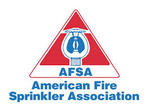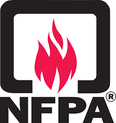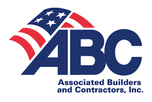Why is There Water in My Dry System?
2/1/2019
How Dry Sprinkler Systems Work
A dry sprinkler system is designed to protect areas that are, or may be, exposed to below freezing temperatures. Compressed air is pumped into the piping above the dry valve, which is a chambered mechanism that holds water back until a fire or leak triggers an air pressure loss. This loss of pressure will eventually go low enough to “trip” the system, pulling the clapper up and allowing water to flow into the system. The Effects of Winter Weather on Dry Systems It is vitally important that your dry system is properly maintained and serviced to ensure proper operation and avoid unwanted system trips. Over time, the regular small compressor top-offs to the overall pressure in the system will cause warm, moist air to collect inside the pipes. This can cause corrosion over the long term. This can also cause water to collect and freeze in trapped areas in the system. If water freezes in metal pipes, they can break very easily, causing a catastrophic loss of air pressure, flooding of the system with water, and water leaking out of the broken area(s). To minimize the chance of this happening, building owners should perform (or have their fire sprinkler contractor perform) monthly or quarterly maintenance. All low points need to be drained—weekly or monthly— especially in the colder months and in the fall when cold weather is approaching. Many dry systems are equipped with drum drips, which isolate a small section of pipe so water can be drained off without shutting down the whole system. Why It's a Must to Maintain Dry Systems Another very important part of dry system care is air compressor maintenance. The tank (if equipped) of the compression needs to be checked/drained weekly or monthly to ensure that the entire tank capacity is available for stored air. Air compressors are required to be hard-wired per state code to minimize accidental shutoffs. Finally, dry systems are required to be equipped with a “low-air” alarm signal, monitored by a 24-hour offsite monitoring company. If the low-air signal sounds, one should call their fire sprinkler contractor right away, as this usually means a system trip is imminent. Knowing and performing these tasks are crucial to lengthening the life of your dry system, as well as avoiding the costs of water damage, building/work shut down, and repairs of the system. Call our service technicians at The Fire Group, Inc. to schedule annual maintenance on your sprinkler systems at 1-888-701-3473. Comments are closed.
|
The Fire Group, Inc.
A customer-focused group of companies providing fire sprinkler installations for new and existing occupancies as well as testing, inspection, and maintenance services for existing fire sprinkler systems. ArchivesCategories |
|
THE FIRE GROUP, INC.
833 3rd Street SW Suite 4 New Brighton, MN 55112 |
Minneapolis/St. Paul Metro call 612-567-4653
|
PROUD MEMBERS OF:
Copyright © 2022

 RSS Feed
RSS Feed



